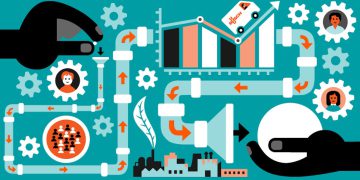The key to a climate-neutral energy system is intelligent networking, control, and optimization of electricity, heat, and gas supply. The Karlsruhe Institute of Technology (KIT) provides a research infrastructure to develop and test new strategies and technologies for sector coupling (Seko) in a transdisciplinary manner on a pilot plant scale. On the way to a new, holistic modeling system, the researchers have reached first milestones. The German Federal Ministry of Education and Research (BMBF) is increasing its funding for the Seko Real Laboratory by 10 million euros to a total of 16.5 million euros.
“Our goal is to look at all forms of energy in an overall model and to generate, store and convert them in line with demand. In our real lab, we can map all the energy conversion processes and paths that will be possible in the future, from power-to‑X to cogeneration to geothermal applications, on a pilot plant scale or as a digital twin.”
- Professor Joachim Knebel
In this project, new, promising computational models and tools are being developed. They make it possible to simulate not only the behavior of individual components such as batteries, gas turbines, electrolysers, power converters or generators in real time and on the basis of real data, but also their interaction in the context of expected demand and current grid capacities.
Forecasts of loads on the electricity, gas and heat grids
Among other things, the scientists have succeeded in combining the thermal behavior of buildings in a single simulation model. It enables forecasts of heat consumption, heating and cooling requirements and the resulting loads on the electricity, gas and heating networks. The data required for this was supplied by the Living Lab Energy Campus (LLEC) model buildings with office buildings and laboratory halls, which are used by employees in real operation and represent the entire range of technologies for heating and cooling. This data was evaluated and processed in the Energy Lab 2.0, which forms the second important pillar of the infrastructure for Seko research alongside the LLEC. With the Smart Energy System Simulation and Control Center (SenSSiCC), the Energy Lab 2.0 includes a photovoltaic field, a large battery storage system, a gas turbine test stand and container plants for methanation (power-to-gas) and for power-to-liquid synthesis, as well as the central control room for the real laboratory.
Scenarios for energy supply in the overall system
“SEKO enables us to work with a young team across institutes and faculties on a new modeling approach that captures the increasingly complex scenarios for energy supply in an overall system,” Knebel emphasizes. “With the help of such a model, we can describe and evaluate possible transformation paths with the goal of climate neutrality by 2045.” So far, the BMBF has funded four subprojects with a volume of 6.5 million euros as part of Seko. With a view to sector coupling, these address, among other things, electrical distribution grids, the building heating sector, technologies for gas supply, and information and communication technologies for an intelligent, stable and secure energy system.
With the budget increase of ten million euros, two further work packages can now be launched, one focusing on building-integrated CO2 capture and conversion, the other on a novel power-to-liquid process. The first work package focuses on the system design, operating behavior and energy requirements of a new generation of air conditioning and ventilation systems that could turn buildings into CO2 sinks through direct air filtration. In the second work package, an integrated process will be validated for the first time in a pilot plant that synergistically combines the production of synthetic methanol from CO2 from biogas plants or sewage treatment plants and green hydrogen from electrolysis.
The Seko research project, including the extension, will run until March 2023. The KIT institutes involved are the Institute of Microprocess Engineering, the Institute of Automation and Applied Computer Science, the Institute of Technical Chemistry, the Institute of Electrical Energy Systems and High Voltage Technology, the Institute of Technical Physics, the Institute of Electrical Engineering, the Institute of Light Technology, and the Engler-Bunte Institute.
















